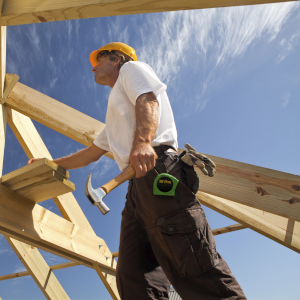Whether to buy an established property or a brand new one is a decision investors have to make each time they purchase — so which is the better asset type?
Why buy a new property?
Buying a brand new or relatively new property is often the more appealing option, as it usually means less initial repairs and maintenance. Depending on the area in which the property is located, prospective tenants are often attracted to more modern homes. This is particularly the case in blue-chip and coastal suburbs.
Buying a new property limits the need for work to be done in the first few years after purchase. This is an attractive trait, as it also means there is less demand for the investor’s time and money following the initial purchase of the property. As they are purchased at a standard suitable for tenants to move in, vacancy rates for new properties, when purchased in the right areas, are low, meaning more immediate cash flow from rental payments.
Newer properties also come with maximum potential for depreciation claims, meaning more money in investors’ pockets at tax time (more on depreciation below).
One huge advantage of buying a new property is that they are generally a lot more energy efficient and environmentally friendly than older properties. It can be an enormous expense to install energy- and water-saving features in an old property.
Why buy an old property?
As a general rule, older properties are more affordable than new properties. Although an older property may have a dated appearance or layout, it also gives you the opportunity to renovate, with improvements ranging from small DIY jobs to large-scale structural renovations, which you can tailor to your budget and preferences.
In many circumstances, it is beneficial to be able to replace old fittings and fixtures. Take a case in which a property investor decides that he or she wants to list a property as a pet-friendly rental property. Purchasing a new dwelling with plush carpets would not make this a viable choice, but an older property with dated carpets allows the investor to choose appropriate flooring (e.g. timber or tile) for the rental property they desire.
Not only will these improvements attract a larger pool of prospective tenants, they will immediately create capital growth for an investment property. A new property is less customisable and has less, if any, opportunity for instant capital growth early on.
There are also certain desirable features that new properties generally lack. For example, it is common for older properties to have high ceilings and hardwood flooring.
How do depreciation and tax benefits differ for new and old properties?
A property will inevitably depreciate in value from wear and tear over time and, much like a car used for business purposes, the depreciation of an investment property can be claimed as a tax deduction – as an investment property is purchased for income-producing purposes.
Property investors can claim depreciation on a property for a maximum of 40 years from the date of construction completion – which means investing in newer properties will give you greater depreciation benefits.
There are two main categories investors can claim for rental property depreciation – plant and equipment deductions and capital works/building deductions. Both new and old properties can be eligible for each category, but new properties will see greater returns from structural depreciation claims than old ones will.
Capital works deductions involve anything to do with structural elements of the property, such as:
- Structural walls
- Wiring
- Brickwork
- Windows
- Plumbing
Although deductions on capital works apply for 40 years from the property’s date of construction, renovations to the structural elements of the building can be claimed from the time of renovation, meaning both new and old properties can benefit in some way from depreciation claims.
Plant and equipment deductions involve anything that is easily replaceable within the property, including:
- Tap fixtures
- Carpets
- Blinds
- Water systems
- Appliances
These parts of the building will depreciate from the time of instalment. The ATO has standard measures that determine the age of individual items. Once an item has reached the end of what is deemed to be its effective life, you can no longer claim depreciation of its value.
In order to make a depreciation claim, an investor must obtain a depreciation schedule, which lists the deductions available on a specific property. Depreciation rates are determined by the original construction cost of a property. When there is no record of the construction cost, a quantity surveyor can estimate it for depreciation purposes and produce a depreciation schedule.
Buying old properties and renovating
An older property will generally be more affordable – but that doesn’t mean you can’t update its appearance.
A cosmetic renovation is an effective way improve the physical appearance of a property. Even the smallest cosmetic renovations can greatly change the feel of a home, attracting a wider pool of tenants.
In addition to provoking increased interest in your property, cosmetic renovations keep it well maintained. Tenants tend to have more respect for properties that are well presented, and when it comes time for resale, a renovation will add value to the property.
Renovating your older property also opens up opportunities for depreciation claims that may not have been initially available to you.
Even if funds are tight after purchasing your property, there are still ways to change its dated appearance. A cosmetic renovation could involve improvements as simple as:
- Painting
- Replacing flooring
- Replacing light fixtures
- Replacing door handles
- Replacing cabinet handles
- Adding a splashback to the kitchen sink
- New blinds
- New plants or fencing in the garden
- Replacing bathroom tiles
- Change of colour scheme
- New window fittings
In addition to these small updates to the appearance of the property, cosmetic renovations can also involve much larger-scale and typically more expensive projects, such as:
- Ripping out the kitchen and replacing cabinets, benchtops and appliances
- Ripping out the vanity in the bathroom
- Replacing an old combined bath tub and shower with a more easily accessible shower
- Pulling down non-load bearing walls to open up space; for instance, the walls of an enclosed kitchen
A cosmetic renovation to an old property could add hundreds of thousands to its value, and significantly broaden your prospective tenant pool.
To decide which option is right for you – new or old – make sure you understand your target tenants (where they want to live, what amenities and property features they desire), the area you’re buying, how this property will function in your portfolio and its capital growth potential.





